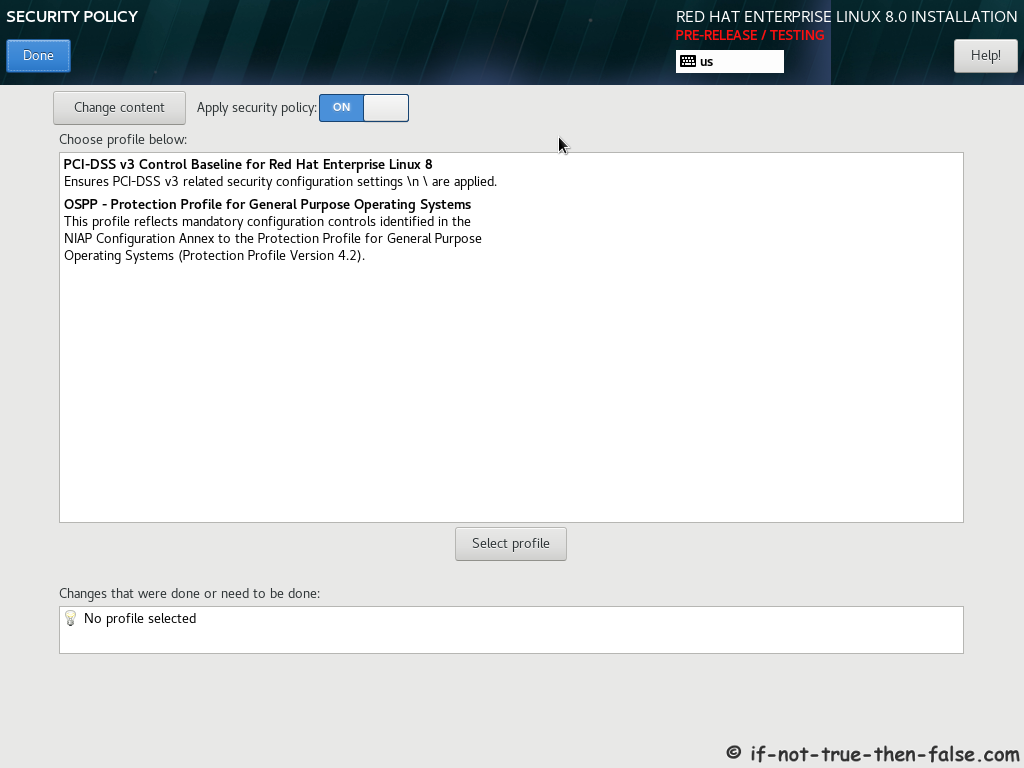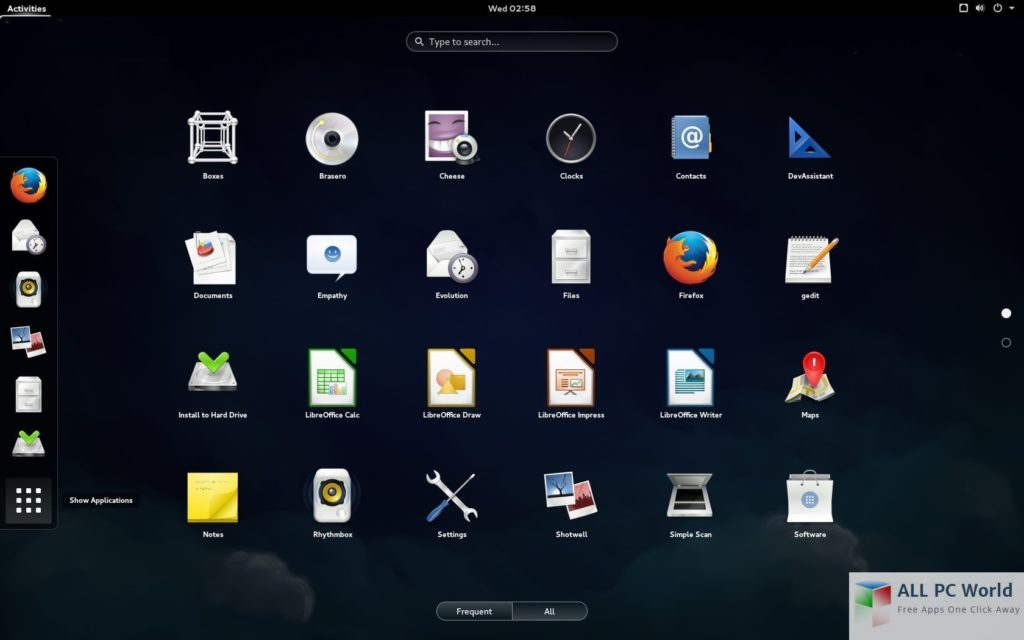Red Hat Enterprise Linux Server. The world's leading enterprise Linux platform. Deploy it on physical systems, as a guest on the most widely available hypervisors, or in the cloud. The Red Hat Customer Portal delivers the knowledge, expertise, and guidance available through your Red Hat subscription.
Linux operating systems are one of the most sophisticated software that has been prevalent from the evolution of olden-day computers. The biggest advantage with such operating systems is the amount of customizability that can be embedded along with the user interface. The operating system is a good platform to develop applications as well.
There are various operating system distributions that implement the Linux core to implement the graphical user interface to get things done. The Linux operating system drastically covers individual users for their administrative works through their graphical user interface.
Overview
Server distribution is majorly based on commands that would require the user to know advanced Linux in-line commands to get things done in the operating system. The server packages are based on the DNS server and for running the backend services that will help you in running the server-based operating system. The biggest advantage with the Linux operating system is that the amount of compatibility that the system has to offer for the users using Linux OS.
The users can extensively use various applications in the operating system combined along with the integrated server applications. All these features make the operating system, one of the most sought after in the computing industry.
If you are very much comfortable in using commands in operation while working with an operating system, then the Linux OS is the best choice for you. There are various Linux OS distributions that are based on the Linux kernel and some of them include; Latest pandora one apk pc.
1. Debian

The Debian operating system is one of the most sophisticated operating systems that is based upon the Linux kernel. There is various amount of software developers that rely upon this operating system to get the job done. The biggest advantage with the Debian is that it is a pretty good Linux distribution that probably gives most of the full-time program stackers and developers to have complete freedom in developing applications for the Linux kernel. The Debian is also one of the most relied upon Linux distribution that is known for the best graphical user interface.
2. Ubuntu
Now for any of the people who are in the software industry, the Ubuntu software is a well-known entity. The extrinsic amount of Ubuntu software that is prevalently used in the developmental industry is with the significance of its practicality with the users. Ubuntu is regarded as one of the best Linux based operating system kernels that are very much useful for beginners. Ubuntu is a free desktop-based operating system prevalent in many systems across.
3. Mint
The Mint operating system is one of the most sophisticated operating systems that is based on the Ubuntu version of Linux kernel. They have a lot of similar traits as of the Ubuntu software and are definitely the best for anyone who is trying to understand the Linux operating system. There are various advantages with the Ubuntu-based operating system and the best part is improved GUI when compared to the original Ubuntu version.

4. OpenSUSE

Software und Software-Entwicklung or Software and systems development that is a German-based operating system. The operating system was developed full-time for open source development of applications. The operating system was developed keeping in mind the majority of the people who are depending upon open-source platforms to scale their applications. OpenSUSE was a community project sponsored mainly by SUSE and other branched companies.
5. Fedora
RedHat in their initial days into the market started with Fedora, a Linux kernel-based operating system. Fedora packed all the features of a conventional operating system that was based on the Linux kernel. The fedora was also a community project where RedHat wanted to increase the trend for software development in the growing communities.
6. Elementary
Elementary is the same operating system that was backed by the same appearance as an Ubuntu desktop. The advantages of the Elementary software are that the system supported applications that were customizable according to the user. That means that the operating system will be able to support applications like Videos, Gallery and conventional web browsers as well.
7. CentOS
CentOS is also a community project that will mostly help in backing up with the application-oriented development. The CentOS is also an open-source platform that will help with most of the operations that are Linux kernel-based. It is an enterprise-class type operating system, that will help you get the most out of every kernel-based operating system.

8. Arch Linux
Arch Linux is probably one of the most recent additions to the Linux kernel-based operating system. The Arch Linux is based upon the advanced repository that it has to support the operations of a Linux kernel-based operating system. the features that are packed in with the Linux based operating system are more advanced and are compatible with both 32-bit and 64-bit operations.
9. Manjaro
The Manjaro is a sophisticated version of the Arch Linux platform and is best for using it in a conventional Ubuntu-based environment. That is not all, the bigger appeal with the Manjaro OS is that it is available in both 32-bit and 64-bit versions just like the Arch Linux platform as well.
10. Zorin
Zorin is probably the sequel Linux based operating system that was built to give users the Windows operating system kind of vibe in an ubuntu environment. That is not all, there are a lot of features that are packed into the operating system that will get the most out of every feature embedded into the operating system. The best part about the Zorin OS is that it allows the user to install an application that will help you run Windows applications in an Ubuntu environment. This probably the best operating system in the Linux line of distributions to get used to the Linux Operating system.
Download Linux ISOs: Top 10 Free Linux Distributions - ISORIVER
There are various operating system distributions that implement the Linux core to implement the graphical user interface to get things done. The Linux operating system drastically covers individual users for their administrative works through their graphical user interface.
Price Currency: USD
Operating System: Linux
Application Category: OS
Red Hat Enterprise Linux is the world’s leading enterprise Linux platform, now optimized for development.
With new developer-centric features like container tools, advanced language support, and application streams, Red Hat Enterprise Linux 8 (RHEL) is the most developer friendly Linux ever. Red Hat Developer members have full access to RHEL 8 software, documentation, and how-tos.
If you're familiar with Red Hat Enterprise Linux, then this is the place to get started.
Get started on RHEL 8
Red Hat Enterprise Linux 8 introduces new features that accelerate your application development including installation, coding, tool selection and setup. It includes dozens of runtime languages, compilers, databases, and web and cache servers.
Start with these commands below for your first time through.
For the impatient, use this yum syntax to install an Application Stream @modulename[:version]
Most recent version:
Or, install a specific version:
Use this if you want to see a list of what’s available:
For container development, RHEL 8 adds new Linux container tools: Buildah (container building), Podman (running containers) and Skopeo (sharing/finding containers). You can easily build images based on the many Application Streams.
For a quick reference to new RHEL 8 commands, download the Red Hat Enterprise Linux 8 Cheat Sheet for tips.
The most developer-friendly Linux ever.
Easy configuration for Windows users and Linux beginners.
RHEL 8 provides enhanced usability, as well as familiar, intuitive deployment and management features
Faster times to “Hello World” and real productivity.
Application Streams make a wide selection of open source tools, including languages, runtimes, databases, and web servers, ready to be installed with a single command. Through Application Streams, you can pick the version of tools you need for your project and easily switch if necessary.
Container development tools.
Expanded set of container development tools. RHEL 8 provides an easier transition to containerized workloads with new container tools such as Buildah, Podman, Skopeo, and CRI-O.
Convenience across RHEL versions and OpenShift.
Most open source programming languages, compilers, web tools, databases run on RHEL 7 and RHEL 8 and OpenShift.

How to know if your code is secure.
Red Hat Enterprise Linux a trusted platform for your business, and RHEL 8 continues to build on this tradition. Features like System Wide Encryption Policy, Nftables/firewalld, and Red Hat Insights mean less effort and time spent managing and configuring services, without compromising security needs.
Develop for containers with podman
Red Hat’s lightweight, open standards-based container toolkit is now fully supported and included with Red Hat Enterprise Linux 8. Built with enterprise IT security needs in mind, Buildah (container building), Podman (running containers), and Skopeo (sharing/finding containers) help developers find, run, build, and share containerized applications more quickly and efficiently, thanks to the distributed and daemonless nature of the tools.
RHEL 8 development tools
Red Hat Enterprise Linux 8 includes Application Streams of multiple versions of languages, compilers, databases, and other tools available - all are part of the subscription. The following components are currently available within RHEL 8:
Languages & compilers
- .NET Core 2.1
- Clang/LLVM Toolset 6.0
- GCC 8.2 (system compiler)
- Go Toolset 1.11
- Java 8 and 11
- Node.js 10
- Perl 5.26 and 5.24
- PHP 7.2
- Python 3.6 and 2.7
- Ruby 2.5
- Rust Toolset 1.31
- Scala 2.10
Databases, web tools, etc.
- MariaDB 10.3
- MySQL 8.0
- PostgreSQL 10.5 and 9.6
- Redis 5.0
- Apache httpd 2.4
- Nginx 1.14
For a complete list of packages available in the Appstream repo, type
Introducing CodeReady Builder
The RHEL 8 introduces a new repository, the CodeReady Linux Builder (or “Builder” for short) that developers may need while developing applications for RHEL. As you all know “developer” is not a one size fits all term.
Installation
Red Hat Linux 6.2 64 Bit Iso Download
Documentation
Red Hat Linux Download Iso Image 64 Bit Free

